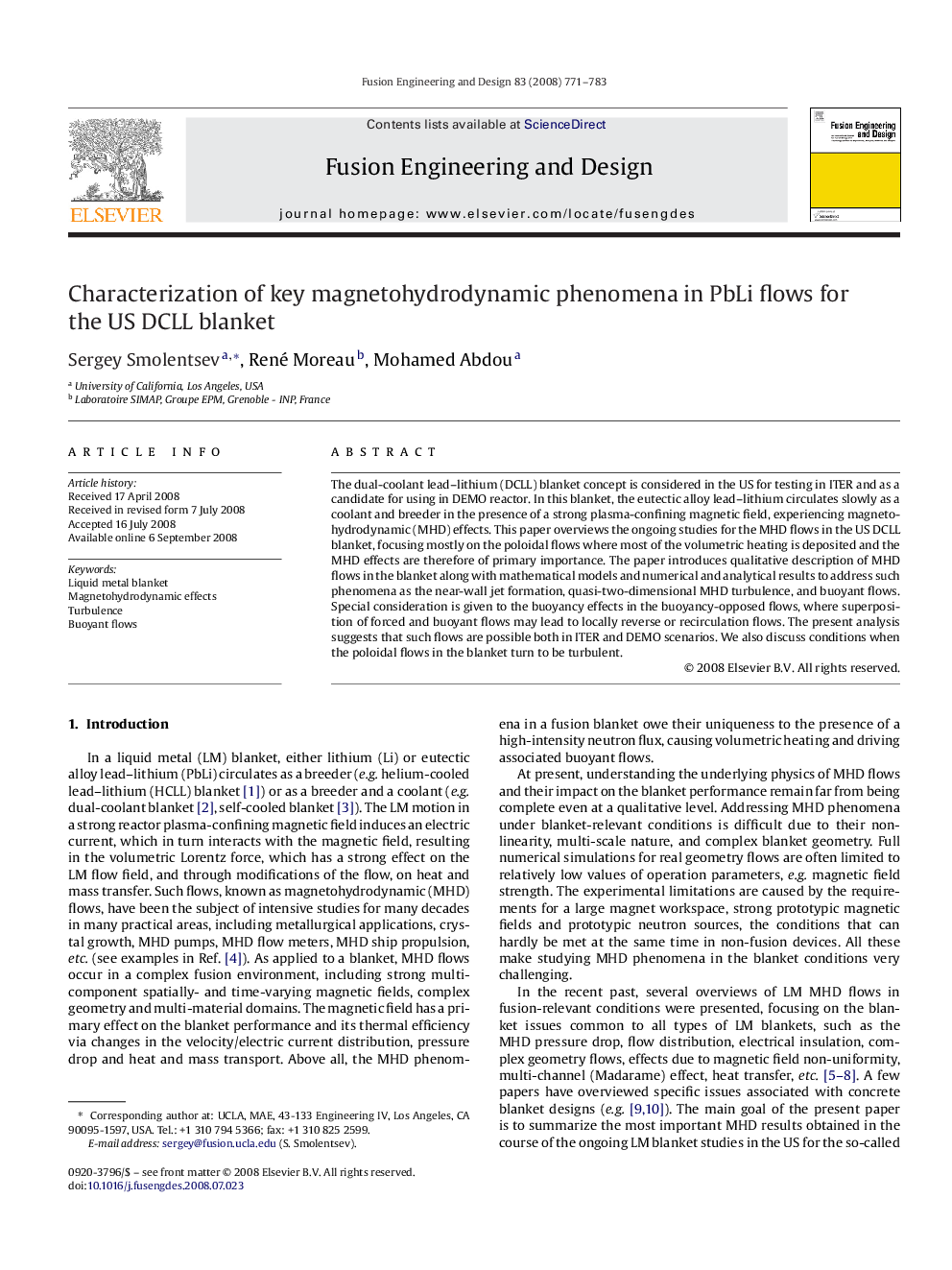| Article ID | Journal | Published Year | Pages | File Type |
|---|---|---|---|---|
| 272908 | Fusion Engineering and Design | 2008 | 13 Pages |
The dual-coolant lead–lithium (DCLL) blanket concept is considered in the US for testing in ITER and as a candidate for using in DEMO reactor. In this blanket, the eutectic alloy lead–lithium circulates slowly as a coolant and breeder in the presence of a strong plasma-confining magnetic field, experiencing magnetohydrodynamic (MHD) effects. This paper overviews the ongoing studies for the MHD flows in the US DCLL blanket, focusing mostly on the poloidal flows where most of the volumetric heating is deposited and the MHD effects are therefore of primary importance. The paper introduces qualitative description of MHD flows in the blanket along with mathematical models and numerical and analytical results to address such phenomena as the near-wall jet formation, quasi-two-dimensional MHD turbulence, and buoyant flows. Special consideration is given to the buoyancy effects in the buoyancy-opposed flows, where superposition of forced and buoyant flows may lead to locally reverse or recirculation flows. The present analysis suggests that such flows are possible both in ITER and DEMO scenarios. We also discuss conditions when the poloidal flows in the blanket turn to be turbulent.
